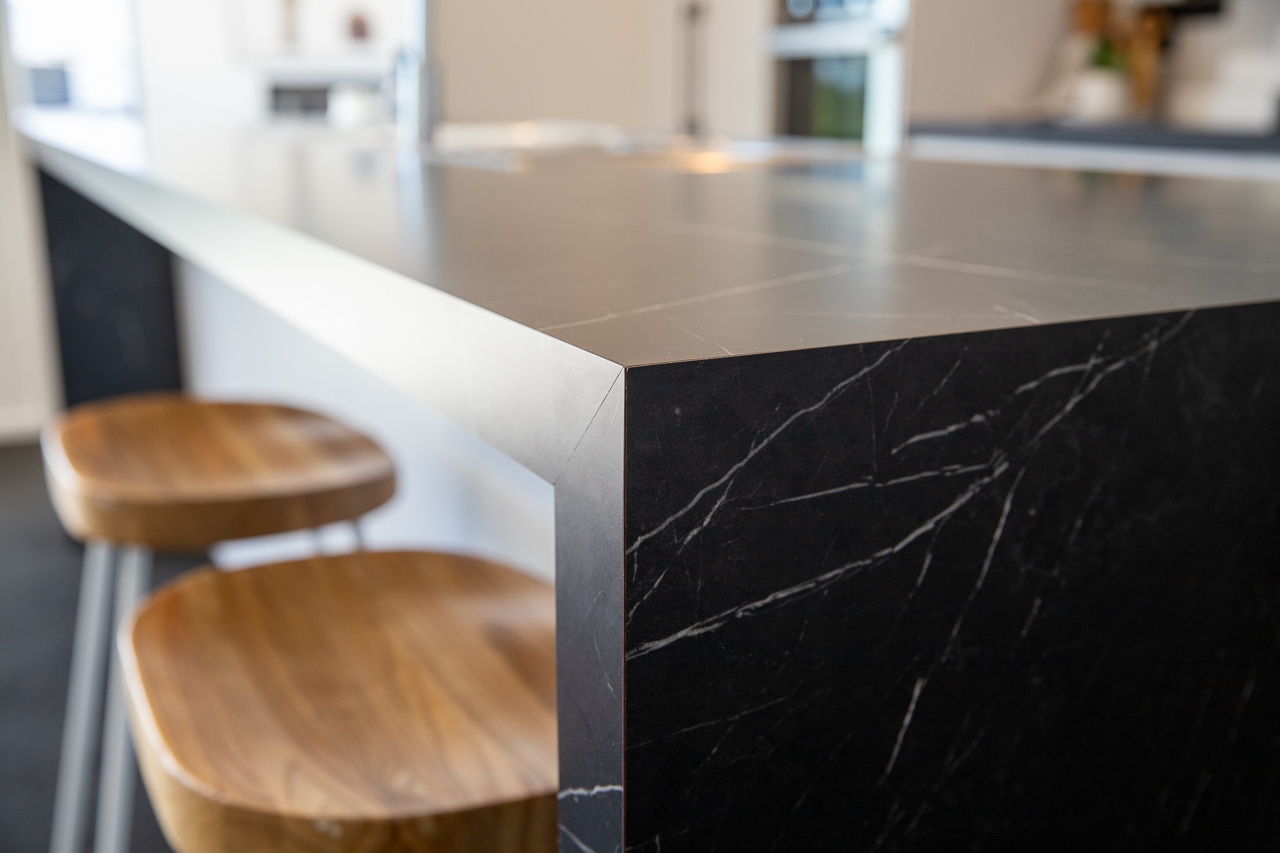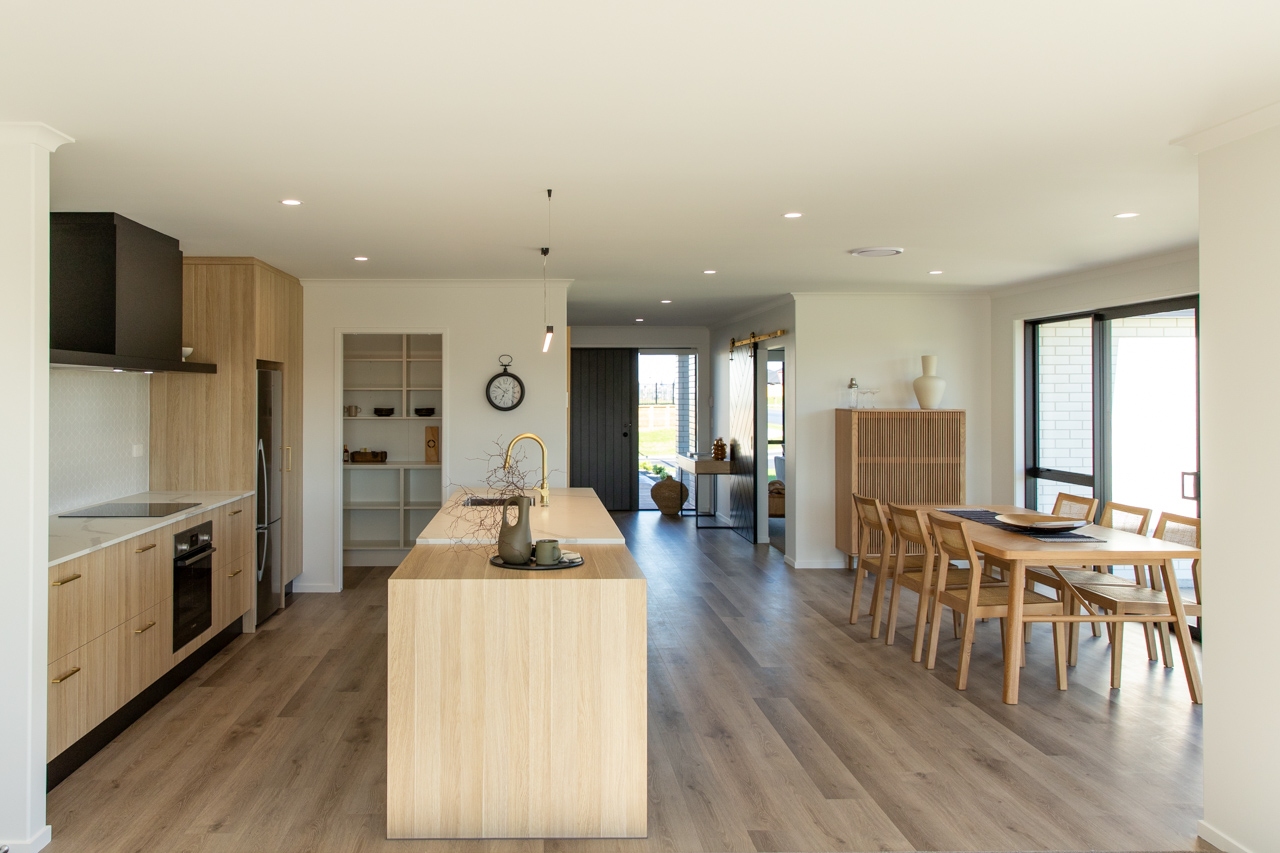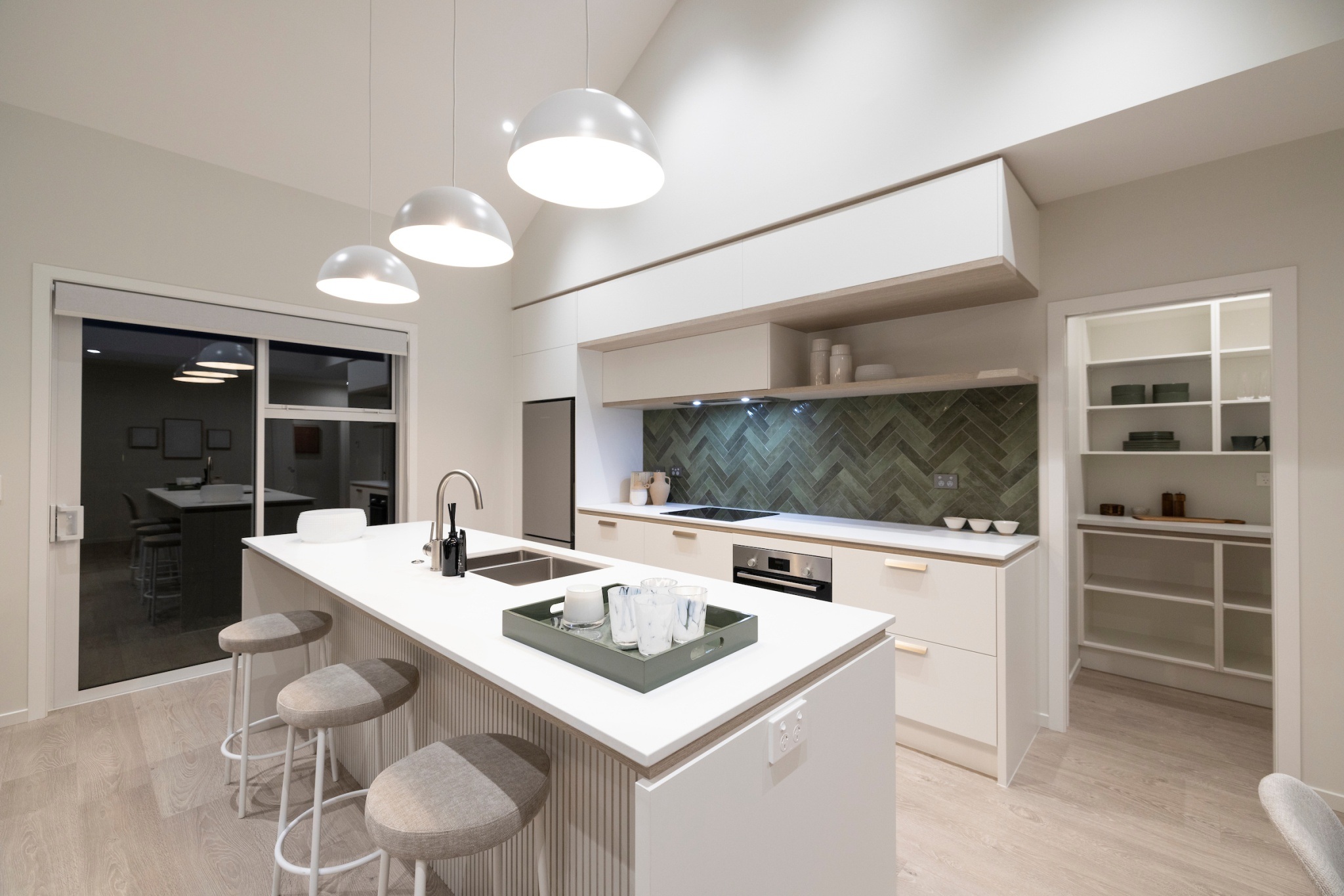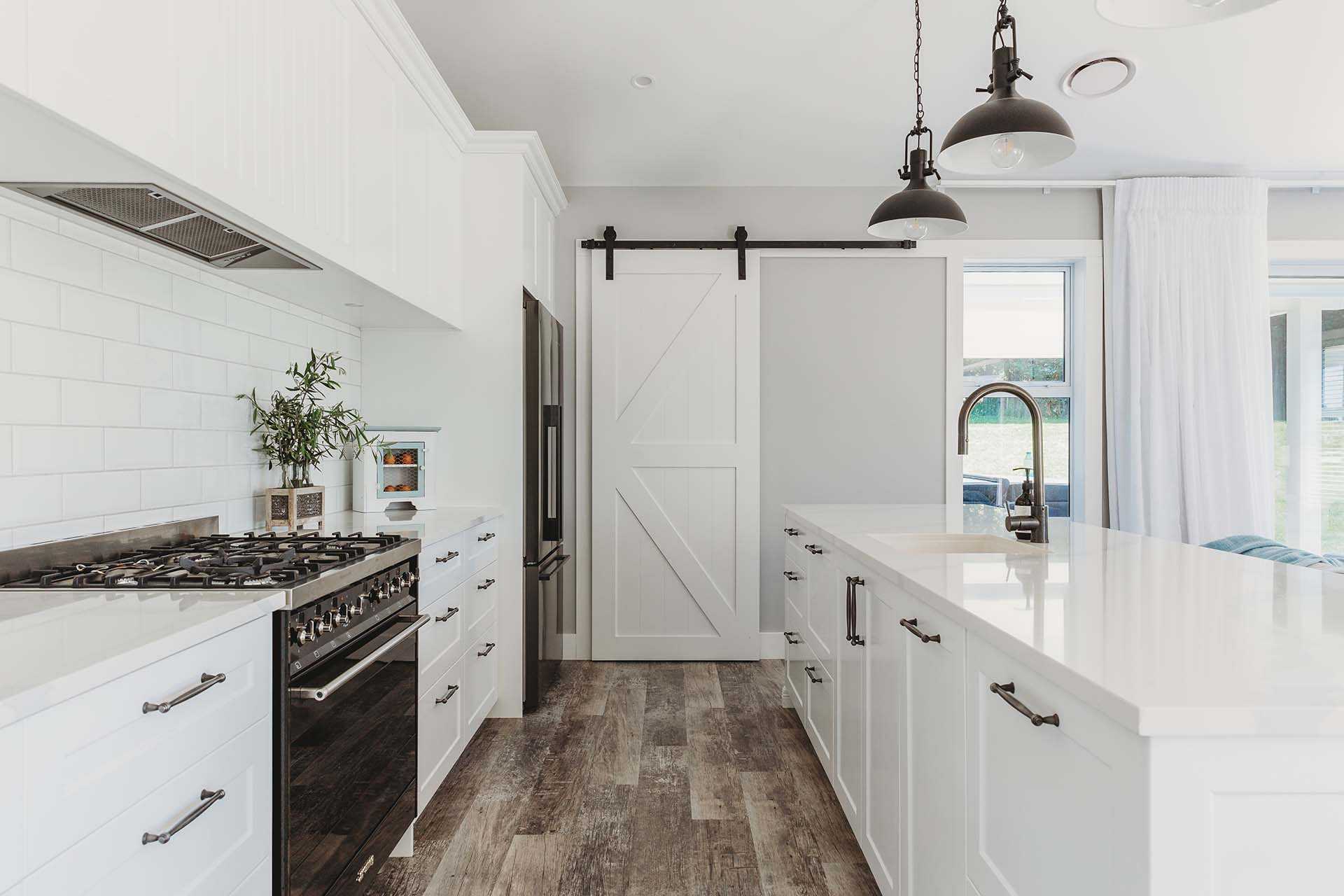
In the world of kitchens, it’s the little things that make the biggest statement. Sure, a good layout is key, but in 2025, it’s the edge profile on your benchtop or the choice of drawer handle (or lack thereof) that really says, “I have taste... and Pinterest.”
So whether you’re going modern minimalism, full blown maximalism or leaning into classic character, here’s how the details are defining the next generation of kitchen design.
Edges that speak volumes
Benchtop edges are no longer just functional finishes - they’re fine-tuned design features. Bevelled edges, once the go-to, are stepping aside for minimalist mitred or square edges. Especially striking when used in waterfall benchtops that flow down the sides like a fabric fold in marble or engineered stone. It’s a sculptural move that oozes confidence.

This bench top features a square edge with a waterfall end, at the Ōmokoroa Show Home.

The Matamata Show Home features a waterfall end on the kitchen island.
If you prefer a more ornate and expressive profile then the likes of ovolo and ogee will appeal. These curvaceous classics are cropping up across kitchen islands and custom cabinetry, creating what we like to call quiet opulence.
Materials that do more
Benchtops are expanding their role - literally. The trend now? A seamless transition from benchtop to splashback and even beyond. Materials like porcelain, concrete, marble, and stainless steel are being used to wrap entire prep zones, giving kitchens a sleek, unified aesthetic. Pair it with integrated appliances and strip lighting and you’ve got a kitchen that’s as Instagrammable as it is practical.
For the brave and design-forward, bold colours and veined stones are on the rise. This isn’t just a workspace - it’s a statement piece.
Don't overlook the gap: negative detailing
It may be called a "negative detail," but there's nothing negative about it. This slim shadow line a subtle gap between the benchtop and cabinetry - adds depth, definition, and a whisper of architectural intrigue. It’s minimalism with attitude. Bonus: it’s surprisingly practical, making it easier to wipe bench crumbs away without catching them on a cabinet edge. Who said beauty can’t be functional?

Negative detail between the bench top and cabinetry adds architectural interest at the Greenhill Park show home.
Dual zones
Create a table as an extension of your island, positioned at a lower level and using a different surface will help create discreet zones for a variety of uses within your kitchen, for example engineered stone for social food prep, merges with a timber bench ‘table’ for enjoying a platter and a relaxed wine.

Dual zones are created overlaying engineered stone and timber at two heights at the Matamata show home.
Handle it with style
The humble handle is getting its moment. For modern kitchens, think: no handles at all. Push-to-open drawers and integrated finger pulls give cabinetry that slick, seamless vibe. If you’re after something with a little more tactile charm, traditional knobs and pull handles - especially in aged brass or copper - add character and warmth.
The middle ground? Go eclectic. Mix handle styles perhaps nobs and pulls on lower cabinetry balanced with the simplicity of integrated handles on the upper units. It’s all about contrast.
Fresh finish
Cabinetry finishes are where personality really comes to play. Matte finishes remain a staple for contemporary spaces, offering a soft, muted sophistication. Gloss is still holding strong for lovers of light and drama, while textured laminates and timber veneers are making waves in both modern and transitional kitchens. Raised panel doors on cabinetry paired with grooved panelling can add a French country chic vibe.
Fluted materials (think timber or glass) are having their time in the sun - with vertical lines and textured finishes adding a striking sense of rhythm and depth to kitchen islands, cabinetry, and even sculleries. It’s tactile, architectural, and just the right amount of showy.
And don’t sleep on open shelving. Whether styled with ceramics and cookbooks or left intentionally sparse, it adds a casual, lived-in layer to otherwise polished spaces.

Pairing a monochrome palette with glossy bench tops and raised panel doors gives this designer rural property a mix of modern and classic.
Modern? Classic? Why not both?
The beauty of kitchen design in 2025 is that it doesn’t have to live in one box. Stainless steel can go industrial or classic retro. Fluted glass can feel art deco or clean and contemporary. The key is cohesion - choosing details that sing together, even if they come from different eras.
Because in today’s kitchen, the devil’s not in the detail - it is the detail.